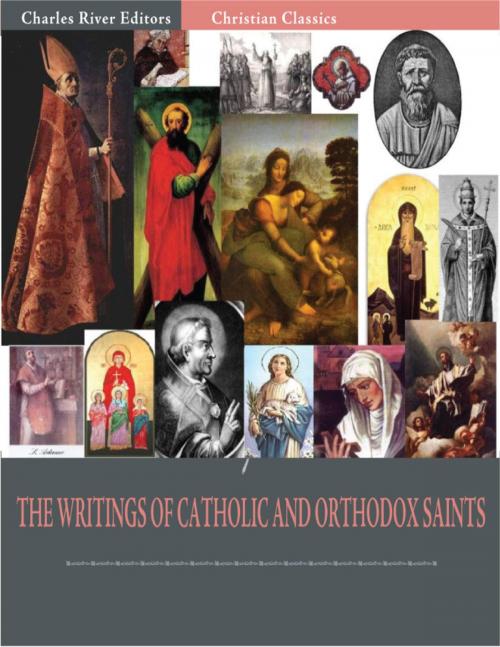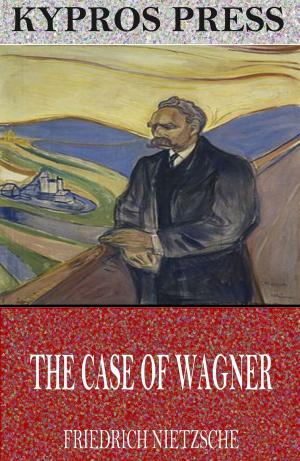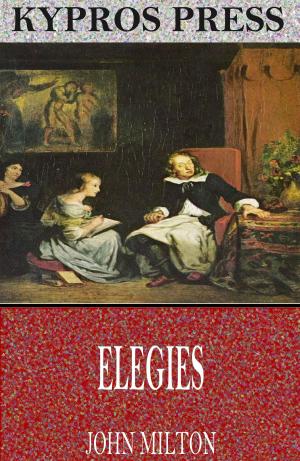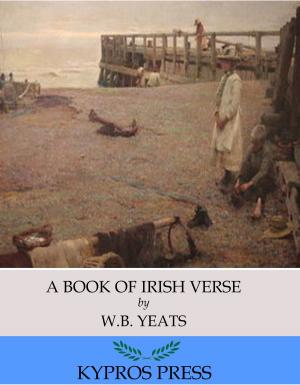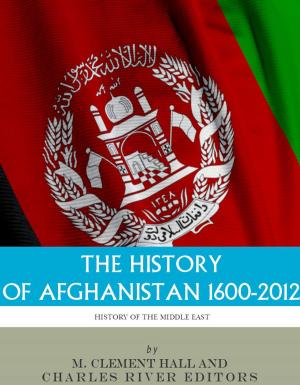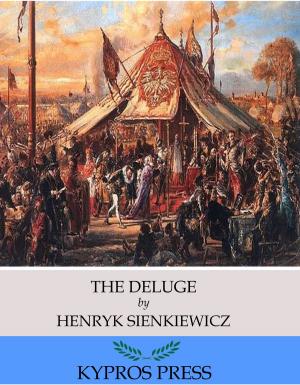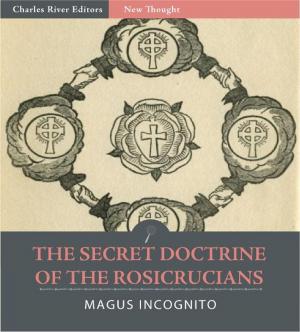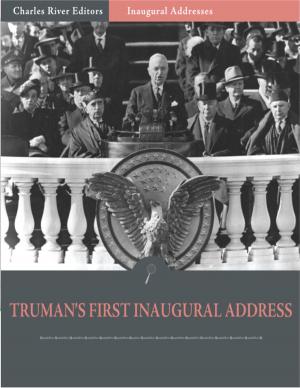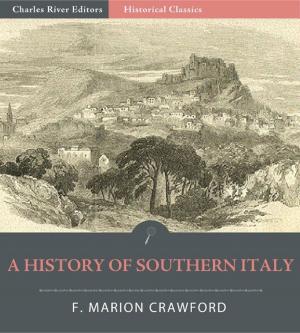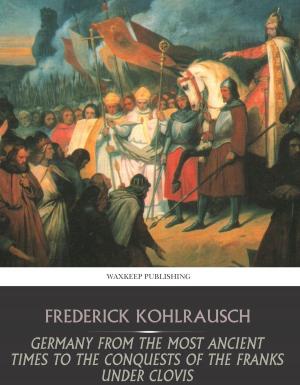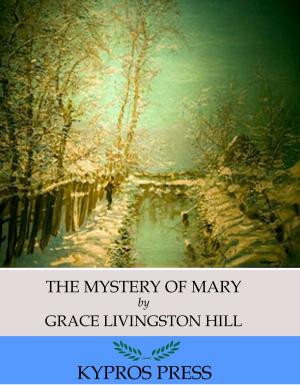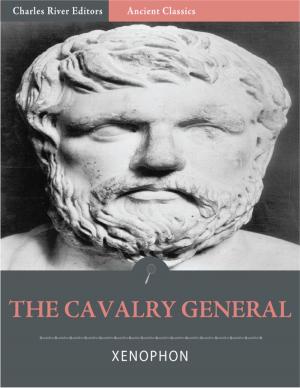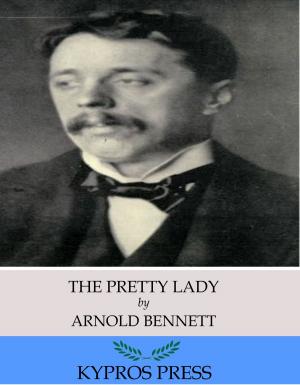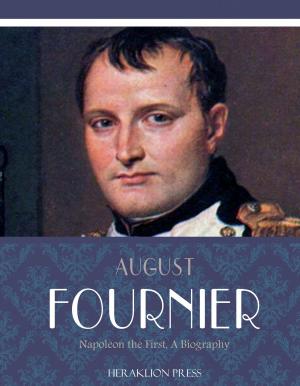The Writings of Catholic and Orthodox Saints: Classic Works of St. Augustine, St. Ignatius, St. Anselm, St. John Damascene, and Others (Illustrated Edition)
Nonfiction, Religion & Spirituality, Christianity, Church, Orthodox Churches, Denominations, Catholic, Catholicism| Author: | Various | ISBN: | 9781475306583 |
| Publisher: | Charles River Editors | Publication: | April 22, 2012 |
| Imprint: | Language: | English |
| Author: | Various |
| ISBN: | 9781475306583 |
| Publisher: | Charles River Editors |
| Publication: | April 22, 2012 |
| Imprint: | |
| Language: | English |
Augustine of Hippo (November 13, 354 August 28, 430), also known as St. Augustine, was Bishop of Hippo Regius. He was a Latin-speaking philosopher and theologian who lived in the Roman Africa Province. His writings were very influential in the development of Western Christianity. According to his contemporary, Jerome, Augustine "established anew the ancient Faith" In his early years he was heavily influenced by Manichaeism and afterward by the Neo-Platonism of Plotinus. After his conversion to Christianity and baptism (AD 387), Augustine developed his own approach to philosophy and theology, accommodating a variety of methods and different perspectives. He believed that the grace of Christ was indispensable to human freedom, and he framed the concepts of original sin and just war. When the Western Roman Empire was starting to disintegrate, Augustine developed the concept of the Church as a spiritual City of God (in a book of the same name), distinct from the material Earthly City. His thought profoundly influenced the medieval worldview. Augustine's City of God was closely identified with the church, the community that worshipped God. In the Catholic Church and the Anglican Communion, he is a saint and pre-eminent Doctor of the Church, and the patron of the Augustinian religious order; his memorial is celebrated 28 August, the day of his death. He is the patron saint of brewers, printers, theologians, the alleviation of sore eyes, and a number of cities and dioceses. Many Protestants, especially Calvinists, consider him to be one of the theological fathers of Reformation due to his teaching on salvation and divine grace. In the Eastern Orthodox Church he is blessed, and his feast day is celebrated on 15 June. Among the Orthodox, he is called "Blessed Augustine", or "St. Augustine the Blessed". Ignatius of Loyola (1491- 1556) was a Spanish knight from a Basque noble family, hermit, priest since 1537, and theologian, who founded the Society of Jesus (Jesuits) and was its first Superior General. Ignatius emerged as a religious leader during the Counter-Reformation, and his devotion to the Catholic Church was characterized by unquestioning obedience to the Catholic Church's authority and hierarchy. After being seriously wounded at the Battle of Pamplona in 1521, he underwent a spiritual conversion while in recovery. De Vita Christi by Ludolph of Saxony inspired Loyola to abandon his previous military life and devote himself to labour for God, following the example of spiritual leaders such as Francis of Assisi. He experienced a vision of the Virgin Mary and the infant Jesus while at the shrine of Our Lady of Montserrat in March 1522. Thereafter he went to Manresa, where he began praying for seven hours a day, often in a nearby cave, while formulating the fundamentals of the Spiritual Exercises. In September 1523, Loyola reached the Holy Land to settle there, but was sent back to Europe by the Franciscans. Between 1524 and 1537, Ignatius studied theology and Latin in Spain and then in Paris. In 1534, he arrived in the latter city during a period of anti-Protestant turmoil which forced John Calvin to flee France. Ignatius and a few followers bound themselves by vows of poverty, chastity, and obedience. In 1539, they formed the Society of Jesus, approved in 1540 by Pope Paul III, as well as his Spiritual Exercises approved in 1548. Loyola also composed the Constitutions of the Society. He died in July 1556, was beatified by Pope Paul V in 1609, canonized by Pope Gregory XV in 1622, and declared patron of all spiritual retreats by Pope Pius XI in 1922. The Spiritual Exercises of St. Ignatius of Loyola, written from 1522-1524, are a brief set of Christian meditations, prayers and mental exercises, divided in four thematic 'weeks' of variable length, designed to be carried out over a period of 28 to 30 days. They were composed with the intention of helping the retreatant to discern Jesus in his life, leading then to a personal commitment to follow it. Though the underlying spiritual outlook is Catholic, the exercises are often made nowadays by non-Catholics. The 'Spiritual Exercises' booklet was formally approved in 1548 by Paul III. Anselm of Canterbury (circa 1033-1109), also called of Aosta for his birthplace, and of Bec for his home monastery, was a Benedictine monk, a philosopher, and a prelate of the church who held the office of Archbishop of Canterbury from 1093 to 1109. Called the founder of scholasticism, he is famous as the originator of the ontological argument for the existence of God. Anselm was proclaimed a Doctor of the Church in 1720 by Pope Clement XI. Although utterly convinced of the truth of Christianity, Anselm of Canterbury struggled to make sense of his religion. He considered the doctrines of faith an invitation to question, to think, and to learn, and he devoted his life to confronting and understanding the most elusive aspects of Christianity. In Monologium, his writings on matters such as free will, the nature of truth, and the existence of God make Anselm one of the greatest theologians and philosophers in history. In Why God Became Man, Anselm tries to answer the question of the incarnation of God in the form of Jesus Christ, concluding that neither men nor God owed anything to the Devil, and that our only debt was to God. Christ died in our place because there was no way we could pay the debt ourselves. Anselms theory is highly popular, though not the only oneAbelard, for example, violently disagreed. It is called Penal substitution because Christ was substituted in our place and paid our penalty. Anselm was equally radical in his emphasis on human reason. You will notice that this writing is unusual in not containing a single Scripture reference. The ontological argument was proposed by Anselm of Canterbury in the second and third chapter of his Proslogion. Anselm's basic argument in Chapter 2 of the Proslogion goes as follows. First, when we hear the words "than which nothing greater can be thought," we understand what the words convey. Secondly, we are able to understand that what exists does so in at least the form of a thought. At this point it must be conceded that what exists does so either only as a thought or as both a thought and reality. However, it must be conceded that such a concept cannot exist only in our thoughts simply because if it existed only in our thoughts, then we could think of something greater than it: that which exists not only in thought, but also in reality - a conclusion which is logically forbidden by the initial premise (since to do so implies the contradiction of thinking of something greater than that which nothing greater can be thought.) It is at this point that the existence of the very thing which nothing greater can be thought cannot be confined to simply an intellectual existence, but must be endowed with a greatness that supersedes mere intellectual existence so as to also enter into and permeate all of objective, ontological existence. In conclusion, that which nothing greater can be thought truly does exist, and in later chapters of the Proslogion Anselm argues that this being has the traditional attributes of God like being the omnipotent creator. Anselms argument was controversial even in its time, leading other critics to attempt to debate his ontological argument, as well as some of the greatest thinkers in history over the centuries. In this collection of Philosophers Criticisms of Anselms Ontological Argument for the Being of God, we hear the opinions of thinkers like John Locke, Rene Descartes, Leibniz, and Emmanual Kant. Saint John of Damascus, also known as St. John Damascene (c. 676 4 December 749) was a Syrian Christian monk and priest. A polymath whose fields of interest and contribution included law, theology, philosophy, and music, before being ordained, he served as a Chief Administrator for the Islamic caliphate in Damascus, wrote works expounding the Christian faith, and composed hymns which are still in everyday use in Eastern Christian monasteries throughout the world. The Catholic Church regards him as a Doctor of the Church, often referred to as the Doctor of the Assumption due to his writings on the Assumption of Mary. St. John Damascene also produced An Exact Exposition of the Orthodox Faith, an invaluable source of traditional Christian theology widely accepted across the different branches and sects of Christianity. Damascenes work is in many respects a collection of accepted theology derived mostly from theologians of the 4th and 5th centuries, providing a comprehensive overview of Christian dogma. Damascene supports his writing through logic and quoting Scripture. An Exact Exposition was extremely influential during the Middle Ages. Aurelius Ambrosius, better known in English as Saint Ambrose (c. between 337 and 340 4 April 397), was a bishop of Milan who became one of the most influential ecclesiastical figures of the 4th century. He was one of the four original doctors of the Church. There is a legend that as an infant, a swarm of bees settled on his face while he lay in his cradle, leaving behind a drop of honey. His father considered this a sign of his future eloquence and honeyed tongue. For this reason, bees and beehives often appear in the saint's symbology. After the early death of his father, Ambrose followed his father's career. He was educated in Rome, studying literature, law, and rhetoric. As bishop of Milan, he immediately adopted an ascetic lifestyle, apportioned his money to the poor, donating all of his land, making only provision for his sister Marcellina (who later became a nun),[2] and committed the care of his family to his brother. Ambrose also wrote a treatise by the name of "The Goodness Of Death". On the eve of setting out for the East, to aid his uncle Valens in repelling a Gothic invasion, Gratian, the Emperor of the West, requested St. Ambrose to write him a treatise in proof of the Divinity of Jesus Christ. Gratian's object in making this request was to secure some sort of preservative against the corrupting influence of Arianism, which at that time (a.d. 378) had gained the upper hand of Orthodoxy in the Eastern provinces of the Empire, owing to its establishment at the Imperial Court. In compliance with Gratian's wish, the Bishop of Milan composed a treatise, which now forms the first two Books of the De Fide. With this work the Emperor was so much pleased that on his return from the East, after the death of Valens at Hadrianople, he wrote to St. Ambrose, begging for a fresh copy of the treatise, and further, for its enlargement by the addition of a discourse on the Divinity of the Holy Spirit. The original treatise was, indeed, enlarged by St. Ambrose in 379, but the additional Books dealt, not with the Divinity of the Holy Spirit, but rather with new objections raised by the Arian teachers, and points which had either been passed over or not fully discussed already. In this way St. Ambrose's Exposition was brought into its present form. Athanasius of Alexandria (circa 298 373) is also given the titles St. Athanasius the Great, Pope St. Athanasius I of Alexandria, St Athanasius the Confessor and (in the Coptic Orthodox Church, mainly) St Athanasius the Apostolic. He was the 20th bishop of Alexandria, but he was often in exile, which was ordered by several different emperors. He is best known for being a Christian theologian and an Early Church Father, including a leading role against the Arians in the First Council of Nicaea. At the time, he was a deacon and personal secretary of the 19th Bishop of Alexandria, Alexander. Nicaea was convoked by the Emperor Constantine in MayAugust 325 to address the Arian heresy that Christ is of a distinct substance from the Father. His writings were well regarded by all Church fathers who followed, in both the West and the East. His writings show a rich devotion to the Word-become-man, great pastoral concern, and profound interest in monasticism. Among his writings was On the Incarnation, his earliest work, believed to have been written around 320. In it, he invokes Plato and used a definition from the Organon of Aristotle. He was also familiar with the theories of various philosophical schools, and in particular with the developments of Neo-Platonism. In this, St. Athanasius defends the incarnation of Christ and explains why God chose to take human form. Athanasius heavily cites Scripture as well as Early Church teachings, while also attempting to defend against objections to his account, some of which still persist today. Basil of Caesarea, also called Saint Basil the Great, (330 379) was the bishop of Caesarea Mazaca in Cappadocia, Asia Minor (modern-day Kayseri, Turkey). St. Basil was born into the wealthy family of Basil the Elder, a famous rhetor, and Emmelia of Caesarea. His parents were known for their piety, and his maternal grandfather was a Christian martyr, executed in the years prior to Constantine I's conversion. Theologically, Basil was a supporter of the Nicene faction of the church, in opposition to Arianism on one side and the followers of Apollinaris of Laodicea on the other. His ability to balance his theological convictions with his political connections made Basil a powerful advocate for the Nicene position. In addition to his work as a theologian, Basil was known for his care of the poor and underprivileged. Basil established guidelines for monastic life which focus on community life, liturgical prayer, and manual labor. Together with Pachomius he is remembered as a father of communal monasticism in Eastern Christianity. He is considered a saint by the traditions of both Eastern and Western Christianity. Basil, Gregory of Nazianzus, and Gregory of Nyssa are collectively referred to as the Cappadocian Fathers. The Eastern Orthodox Church and Eastern Catholic Churches have given him, together with Gregory of Nazianzus and John Chrysostom, the title of Great Hierarch. The Eastern Orthodox Church and the Roman Catholic Church have also named him a Doctor of the Church. He is also referred to as "the revealer of heavenly mysteries" (Ouranophantor). The principal theological writings of Basil are his De Spirity Sancto (On the Holy Spirit), a lucid and edifying appeal to Scripture and early Christian tradition (to prove the divinity of the Holy Spirit), and his Refutation of the Apology of the Impious Eunomius, written in 363 or 364, three books against Eunomius of Cyzicus, the chief exponent of Anomoian Arianism. The first three books of the Refutation are his work; the fourth and fifth books that are usually included do not belong to Basil, or to Apollinaris of Laodicea, but probably to Didymus "the Blind" of Alexandria. Bernard of Clairvaux (10901153) was a French abbot and the primary builder of the reforming Cistercian order. Following the Christian defeat at the Siege of Edessa, the Pope commissioned Bernard to preach the Second Crusade. The last years of Bernard's life were saddened by the failure of the crusaders, the entire responsibility for which was thrown upon him. Bernard died at age 63, after 40 years spent in the cloister. He was the first Cistercian monk placed on the calendar of saints, and was canonized by Pope Alexander III on 18 January 1174. Pope Pius VIII bestowed upon him the title "Doctor of the Church." St. Bernard wrote On Loving God, a short treatise that is ostensibly about loving God but is more of an exposition on the topic of love itself. In addition to providing a summary of Gods love for people, the work, filled to the brim with Scripture, discusses why we love what we do. Saint Catherine of Siena (25 March 1347 in Siena 29 April 1380 in Rome), born Catherine Benincasa, was a tertiary of the Dominican Order, and a Scholastic philosopher and theologian. She was born in Siena, Italy, to Giacomo di Benincasa, a cloth dyer who ran his enterprise with the help of his sons, and Lapa Piagenti, possibly the daughter of a local poet.The house where Catherine grew up is still in existence. Born in 1347, she arrived when the black death struck the area; Siena was badly ravaged. She also worked to bring the papacy of Gregory XI back to Rome from its displacement in France, and to establish peace among the Italian city-states. She was proclaimed a Doctor of the Church in 1970. She is one of the two patron saints of Italy, together with Francis of Assisi. Pope Clement I (fl. 96),also known as Saint Clement of Rome (in Latin, Clemens Romanus), is listed from an early date as a Bishop of Rome. He was the first Apostolic Father of the Church. Few details are known about Clement's life. According to Tertullian, Clement was consecrated by Saint Peter, and he is known to have been a leading member of the church in Rome in the late 1st century. Early church lists place him as the second or third bishop of Rome after Saint Peter. Clement's only genuine extant writing is his letter, 1 Clement (c. 96), to the church at Corinth, in response to a dispute in which certain presbyters of the Corinthian church had been deposed.
Augustine of Hippo (November 13, 354 August 28, 430), also known as St. Augustine, was Bishop of Hippo Regius. He was a Latin-speaking philosopher and theologian who lived in the Roman Africa Province. His writings were very influential in the development of Western Christianity. According to his contemporary, Jerome, Augustine "established anew the ancient Faith" In his early years he was heavily influenced by Manichaeism and afterward by the Neo-Platonism of Plotinus. After his conversion to Christianity and baptism (AD 387), Augustine developed his own approach to philosophy and theology, accommodating a variety of methods and different perspectives. He believed that the grace of Christ was indispensable to human freedom, and he framed the concepts of original sin and just war. When the Western Roman Empire was starting to disintegrate, Augustine developed the concept of the Church as a spiritual City of God (in a book of the same name), distinct from the material Earthly City. His thought profoundly influenced the medieval worldview. Augustine's City of God was closely identified with the church, the community that worshipped God. In the Catholic Church and the Anglican Communion, he is a saint and pre-eminent Doctor of the Church, and the patron of the Augustinian religious order; his memorial is celebrated 28 August, the day of his death. He is the patron saint of brewers, printers, theologians, the alleviation of sore eyes, and a number of cities and dioceses. Many Protestants, especially Calvinists, consider him to be one of the theological fathers of Reformation due to his teaching on salvation and divine grace. In the Eastern Orthodox Church he is blessed, and his feast day is celebrated on 15 June. Among the Orthodox, he is called "Blessed Augustine", or "St. Augustine the Blessed". Ignatius of Loyola (1491- 1556) was a Spanish knight from a Basque noble family, hermit, priest since 1537, and theologian, who founded the Society of Jesus (Jesuits) and was its first Superior General. Ignatius emerged as a religious leader during the Counter-Reformation, and his devotion to the Catholic Church was characterized by unquestioning obedience to the Catholic Church's authority and hierarchy. After being seriously wounded at the Battle of Pamplona in 1521, he underwent a spiritual conversion while in recovery. De Vita Christi by Ludolph of Saxony inspired Loyola to abandon his previous military life and devote himself to labour for God, following the example of spiritual leaders such as Francis of Assisi. He experienced a vision of the Virgin Mary and the infant Jesus while at the shrine of Our Lady of Montserrat in March 1522. Thereafter he went to Manresa, where he began praying for seven hours a day, often in a nearby cave, while formulating the fundamentals of the Spiritual Exercises. In September 1523, Loyola reached the Holy Land to settle there, but was sent back to Europe by the Franciscans. Between 1524 and 1537, Ignatius studied theology and Latin in Spain and then in Paris. In 1534, he arrived in the latter city during a period of anti-Protestant turmoil which forced John Calvin to flee France. Ignatius and a few followers bound themselves by vows of poverty, chastity, and obedience. In 1539, they formed the Society of Jesus, approved in 1540 by Pope Paul III, as well as his Spiritual Exercises approved in 1548. Loyola also composed the Constitutions of the Society. He died in July 1556, was beatified by Pope Paul V in 1609, canonized by Pope Gregory XV in 1622, and declared patron of all spiritual retreats by Pope Pius XI in 1922. The Spiritual Exercises of St. Ignatius of Loyola, written from 1522-1524, are a brief set of Christian meditations, prayers and mental exercises, divided in four thematic 'weeks' of variable length, designed to be carried out over a period of 28 to 30 days. They were composed with the intention of helping the retreatant to discern Jesus in his life, leading then to a personal commitment to follow it. Though the underlying spiritual outlook is Catholic, the exercises are often made nowadays by non-Catholics. The 'Spiritual Exercises' booklet was formally approved in 1548 by Paul III. Anselm of Canterbury (circa 1033-1109), also called of Aosta for his birthplace, and of Bec for his home monastery, was a Benedictine monk, a philosopher, and a prelate of the church who held the office of Archbishop of Canterbury from 1093 to 1109. Called the founder of scholasticism, he is famous as the originator of the ontological argument for the existence of God. Anselm was proclaimed a Doctor of the Church in 1720 by Pope Clement XI. Although utterly convinced of the truth of Christianity, Anselm of Canterbury struggled to make sense of his religion. He considered the doctrines of faith an invitation to question, to think, and to learn, and he devoted his life to confronting and understanding the most elusive aspects of Christianity. In Monologium, his writings on matters such as free will, the nature of truth, and the existence of God make Anselm one of the greatest theologians and philosophers in history. In Why God Became Man, Anselm tries to answer the question of the incarnation of God in the form of Jesus Christ, concluding that neither men nor God owed anything to the Devil, and that our only debt was to God. Christ died in our place because there was no way we could pay the debt ourselves. Anselms theory is highly popular, though not the only oneAbelard, for example, violently disagreed. It is called Penal substitution because Christ was substituted in our place and paid our penalty. Anselm was equally radical in his emphasis on human reason. You will notice that this writing is unusual in not containing a single Scripture reference. The ontological argument was proposed by Anselm of Canterbury in the second and third chapter of his Proslogion. Anselm's basic argument in Chapter 2 of the Proslogion goes as follows. First, when we hear the words "than which nothing greater can be thought," we understand what the words convey. Secondly, we are able to understand that what exists does so in at least the form of a thought. At this point it must be conceded that what exists does so either only as a thought or as both a thought and reality. However, it must be conceded that such a concept cannot exist only in our thoughts simply because if it existed only in our thoughts, then we could think of something greater than it: that which exists not only in thought, but also in reality - a conclusion which is logically forbidden by the initial premise (since to do so implies the contradiction of thinking of something greater than that which nothing greater can be thought.) It is at this point that the existence of the very thing which nothing greater can be thought cannot be confined to simply an intellectual existence, but must be endowed with a greatness that supersedes mere intellectual existence so as to also enter into and permeate all of objective, ontological existence. In conclusion, that which nothing greater can be thought truly does exist, and in later chapters of the Proslogion Anselm argues that this being has the traditional attributes of God like being the omnipotent creator. Anselms argument was controversial even in its time, leading other critics to attempt to debate his ontological argument, as well as some of the greatest thinkers in history over the centuries. In this collection of Philosophers Criticisms of Anselms Ontological Argument for the Being of God, we hear the opinions of thinkers like John Locke, Rene Descartes, Leibniz, and Emmanual Kant. Saint John of Damascus, also known as St. John Damascene (c. 676 4 December 749) was a Syrian Christian monk and priest. A polymath whose fields of interest and contribution included law, theology, philosophy, and music, before being ordained, he served as a Chief Administrator for the Islamic caliphate in Damascus, wrote works expounding the Christian faith, and composed hymns which are still in everyday use in Eastern Christian monasteries throughout the world. The Catholic Church regards him as a Doctor of the Church, often referred to as the Doctor of the Assumption due to his writings on the Assumption of Mary. St. John Damascene also produced An Exact Exposition of the Orthodox Faith, an invaluable source of traditional Christian theology widely accepted across the different branches and sects of Christianity. Damascenes work is in many respects a collection of accepted theology derived mostly from theologians of the 4th and 5th centuries, providing a comprehensive overview of Christian dogma. Damascene supports his writing through logic and quoting Scripture. An Exact Exposition was extremely influential during the Middle Ages. Aurelius Ambrosius, better known in English as Saint Ambrose (c. between 337 and 340 4 April 397), was a bishop of Milan who became one of the most influential ecclesiastical figures of the 4th century. He was one of the four original doctors of the Church. There is a legend that as an infant, a swarm of bees settled on his face while he lay in his cradle, leaving behind a drop of honey. His father considered this a sign of his future eloquence and honeyed tongue. For this reason, bees and beehives often appear in the saint's symbology. After the early death of his father, Ambrose followed his father's career. He was educated in Rome, studying literature, law, and rhetoric. As bishop of Milan, he immediately adopted an ascetic lifestyle, apportioned his money to the poor, donating all of his land, making only provision for his sister Marcellina (who later became a nun),[2] and committed the care of his family to his brother. Ambrose also wrote a treatise by the name of "The Goodness Of Death". On the eve of setting out for the East, to aid his uncle Valens in repelling a Gothic invasion, Gratian, the Emperor of the West, requested St. Ambrose to write him a treatise in proof of the Divinity of Jesus Christ. Gratian's object in making this request was to secure some sort of preservative against the corrupting influence of Arianism, which at that time (a.d. 378) had gained the upper hand of Orthodoxy in the Eastern provinces of the Empire, owing to its establishment at the Imperial Court. In compliance with Gratian's wish, the Bishop of Milan composed a treatise, which now forms the first two Books of the De Fide. With this work the Emperor was so much pleased that on his return from the East, after the death of Valens at Hadrianople, he wrote to St. Ambrose, begging for a fresh copy of the treatise, and further, for its enlargement by the addition of a discourse on the Divinity of the Holy Spirit. The original treatise was, indeed, enlarged by St. Ambrose in 379, but the additional Books dealt, not with the Divinity of the Holy Spirit, but rather with new objections raised by the Arian teachers, and points which had either been passed over or not fully discussed already. In this way St. Ambrose's Exposition was brought into its present form. Athanasius of Alexandria (circa 298 373) is also given the titles St. Athanasius the Great, Pope St. Athanasius I of Alexandria, St Athanasius the Confessor and (in the Coptic Orthodox Church, mainly) St Athanasius the Apostolic. He was the 20th bishop of Alexandria, but he was often in exile, which was ordered by several different emperors. He is best known for being a Christian theologian and an Early Church Father, including a leading role against the Arians in the First Council of Nicaea. At the time, he was a deacon and personal secretary of the 19th Bishop of Alexandria, Alexander. Nicaea was convoked by the Emperor Constantine in MayAugust 325 to address the Arian heresy that Christ is of a distinct substance from the Father. His writings were well regarded by all Church fathers who followed, in both the West and the East. His writings show a rich devotion to the Word-become-man, great pastoral concern, and profound interest in monasticism. Among his writings was On the Incarnation, his earliest work, believed to have been written around 320. In it, he invokes Plato and used a definition from the Organon of Aristotle. He was also familiar with the theories of various philosophical schools, and in particular with the developments of Neo-Platonism. In this, St. Athanasius defends the incarnation of Christ and explains why God chose to take human form. Athanasius heavily cites Scripture as well as Early Church teachings, while also attempting to defend against objections to his account, some of which still persist today. Basil of Caesarea, also called Saint Basil the Great, (330 379) was the bishop of Caesarea Mazaca in Cappadocia, Asia Minor (modern-day Kayseri, Turkey). St. Basil was born into the wealthy family of Basil the Elder, a famous rhetor, and Emmelia of Caesarea. His parents were known for their piety, and his maternal grandfather was a Christian martyr, executed in the years prior to Constantine I's conversion. Theologically, Basil was a supporter of the Nicene faction of the church, in opposition to Arianism on one side and the followers of Apollinaris of Laodicea on the other. His ability to balance his theological convictions with his political connections made Basil a powerful advocate for the Nicene position. In addition to his work as a theologian, Basil was known for his care of the poor and underprivileged. Basil established guidelines for monastic life which focus on community life, liturgical prayer, and manual labor. Together with Pachomius he is remembered as a father of communal monasticism in Eastern Christianity. He is considered a saint by the traditions of both Eastern and Western Christianity. Basil, Gregory of Nazianzus, and Gregory of Nyssa are collectively referred to as the Cappadocian Fathers. The Eastern Orthodox Church and Eastern Catholic Churches have given him, together with Gregory of Nazianzus and John Chrysostom, the title of Great Hierarch. The Eastern Orthodox Church and the Roman Catholic Church have also named him a Doctor of the Church. He is also referred to as "the revealer of heavenly mysteries" (Ouranophantor). The principal theological writings of Basil are his De Spirity Sancto (On the Holy Spirit), a lucid and edifying appeal to Scripture and early Christian tradition (to prove the divinity of the Holy Spirit), and his Refutation of the Apology of the Impious Eunomius, written in 363 or 364, three books against Eunomius of Cyzicus, the chief exponent of Anomoian Arianism. The first three books of the Refutation are his work; the fourth and fifth books that are usually included do not belong to Basil, or to Apollinaris of Laodicea, but probably to Didymus "the Blind" of Alexandria. Bernard of Clairvaux (10901153) was a French abbot and the primary builder of the reforming Cistercian order. Following the Christian defeat at the Siege of Edessa, the Pope commissioned Bernard to preach the Second Crusade. The last years of Bernard's life were saddened by the failure of the crusaders, the entire responsibility for which was thrown upon him. Bernard died at age 63, after 40 years spent in the cloister. He was the first Cistercian monk placed on the calendar of saints, and was canonized by Pope Alexander III on 18 January 1174. Pope Pius VIII bestowed upon him the title "Doctor of the Church." St. Bernard wrote On Loving God, a short treatise that is ostensibly about loving God but is more of an exposition on the topic of love itself. In addition to providing a summary of Gods love for people, the work, filled to the brim with Scripture, discusses why we love what we do. Saint Catherine of Siena (25 March 1347 in Siena 29 April 1380 in Rome), born Catherine Benincasa, was a tertiary of the Dominican Order, and a Scholastic philosopher and theologian. She was born in Siena, Italy, to Giacomo di Benincasa, a cloth dyer who ran his enterprise with the help of his sons, and Lapa Piagenti, possibly the daughter of a local poet.The house where Catherine grew up is still in existence. Born in 1347, she arrived when the black death struck the area; Siena was badly ravaged. She also worked to bring the papacy of Gregory XI back to Rome from its displacement in France, and to establish peace among the Italian city-states. She was proclaimed a Doctor of the Church in 1970. She is one of the two patron saints of Italy, together with Francis of Assisi. Pope Clement I (fl. 96),also known as Saint Clement of Rome (in Latin, Clemens Romanus), is listed from an early date as a Bishop of Rome. He was the first Apostolic Father of the Church. Few details are known about Clement's life. According to Tertullian, Clement was consecrated by Saint Peter, and he is known to have been a leading member of the church in Rome in the late 1st century. Early church lists place him as the second or third bishop of Rome after Saint Peter. Clement's only genuine extant writing is his letter, 1 Clement (c. 96), to the church at Corinth, in response to a dispute in which certain presbyters of the Corinthian church had been deposed.
